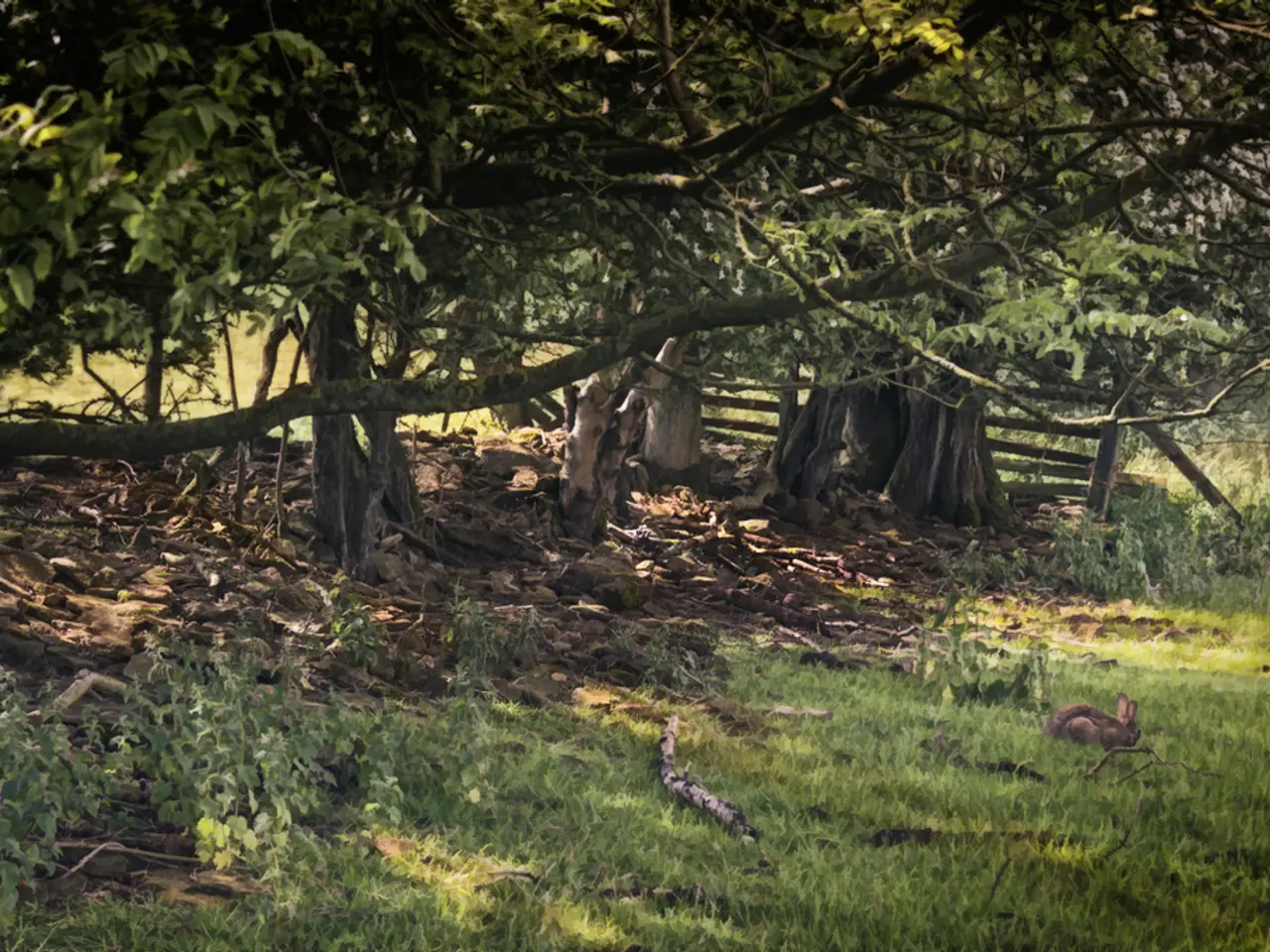Reducing Carbon Impact in Landscaping: Effective Strategies and Solutions
Creating an eco-friendly garden is not only beneficial for the environment, but it can also enhance biodiversity and visual appeal. Here are some tips on how to incorporate local suppliers, mulch, drought-tolerant plants, and reduce lawn area for a more sustainable garden.
Using Local Suppliers
- Source Materials Locally
- By using locally sourced materials for construction and decoration, you can reduce the carbon footprint associated with transportation.
- Consider reclaimed or recycled materials for furniture and architectural features.
- Collaborate with Local Nurseries
- Partner with local nurseries to acquire plants that are native to your region. This supports local businesses and ensures that plants are well-suited to local conditions.
Using Mulch
- Select Organic Mulch
- Choose organic mulch options like wood chips, shredded bark, straw, leaves, and grass clippings. These help retain moisture, suppress weeds, and naturally decompose.
- Consider using the cardboard method for converting grassy areas into garden beds, which helps in weed control and provides additional compost.
- Mulch Benefits
- Mulch reduces soil evaporation and runoff, promoting healthier plant growth and minimizing the need for frequent watering.
Incorporating Drought-Tolerant Plants
- Native Plants
- Plant native species that are adapted to your local climate. These plants require less water and maintenance, reducing the need for irrigation and chemical inputs.
- Drought-Resistant Options
- Use succulents, sage, and ornamental grasses if native plants are not available or suitable. These are highly drought-tolerant and require minimal care.
Reducing Lawn Area
- Transition to Native Meadows
- Replace traditional lawns with native meadows or perennials. This reduces water consumption and creates a more sustainable ecosystem.
- Native meadows promote deeper root systems, which help retain water and reduce runoff.
- Incorporate Vegetable Gardens
- Allocate space for vegetable gardens, which not only reduce the need for store-bought produce but also encourage sustainable gardening practices.
Additional Tips
- Efficient Irrigation Systems
- Install drip irrigation systems that deliver water directly to plant roots, reducing water waste and minimizing evaporation.
- Permeable Surfaces
- Use permeable surfaces like gravel paths and porous paving to enhance rainwater absorption and reduce runoff.
- Strategic Plant Placement
- Group plants by their water needs to optimize irrigation and reduce unnecessary watering.
By implementing these strategies, you can create a garden landscaping project that is not only eco-friendly but also visually appealing and low-maintenance.
When sourcing quotes for your landscaping project, check if your supplier/installer uses locally sourced and manufactured fencing products. Using locally sourced mulch on your garden beds can help reduce the amount of water needed to keep plants alive and help retain water in the soil. By partnering with a local fencing supplier, you can improve the build quality of your garden fence, reduce the carbon footprint of your landscaping project, and create a sustainable garden.
Some examples of drought-resistant plants include roses, olives, and geraniums. Planting wildflowers instead of a lawn can be a sustainable landscaping option. Engaging a local fencing supplier that keeps their supply chain domestic can help create a sustainable garden by reducing carbon emissions. Using locally sourced fencing materials can help reduce the carbon footprint of your landscaping project by reducing the energy consumption of international shipping. Replacing a lawn with ornamental grass, low-growing shrubs, or groundcovers can be a more sustainable landscaping method. Native grasses and shrubs, as well as certain plants from Mediterranean areas, are inherently drought-resistant.
- To further support local businesses while promoting a sustainable lifestyle, consider sourcing fencing materials locally.
- By selecting drought-resistant plants like roses, olives, and geraniums, you can create a vibrant and low-maintenance garden that requires less water.




